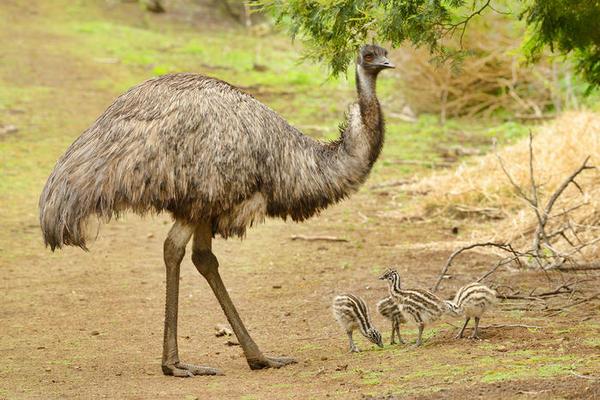
The emu is the second-largest living bird by height, after its ratite relative, the ostrich. It is endemic to Australia where it is the largest native bird and the only extant member of the genus Dromaius.
Emu, flightless bird of Australia and second largest living bird: the emu is more than 1.5 metres (5 feet) tall and may weigh more than 45 kg (100 pounds). The emu is the sole living member of the family Dromaiidae (or Dromiceiidae) of the order Casuariiformes, which also includes the cassowaries.
The common emu, Dromaius (or Dromiceius) novaehollandiae, the only survivor of several forms exterminated by settlers, is stout-bodied and long-legged, like its relative the cassowary. Both sexes are brownish, with dark gray head and neck. Emus can dash away at nearly 50 km (30 miles) per hour; if cornered they kick with their big three-toed feet. Emus mate for life; the male incubates from 7 to 10 dark green eggs, 13 cm (5 inches) long, in a ground nest for about 60 days. The striped young soon run with the adults. In small flocks emus forage for fruits and insects but may also damage crops. The peculiar structure of the trachea of the emu is correlated with the loud booming note of the bird during the breeding season. Three subspecies are recognized, inhabiting northern, southeastern, and southwestern Australia; a fourth, now extinct, lived on Tasmania.
The common emu may not be able to soar, but for such a big bird it sure can run. This flightless bird has small wings relative to the size of its body. Its long, powerful legs, though, allow it to run up to about 30 miles (50 kilometers) per hour. Each emu foot has three forward-facing toes that allow it to grip the ground, thrusting the bird forward. A powerful kick is also handy for keeping predators at bay.